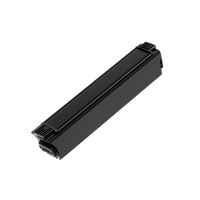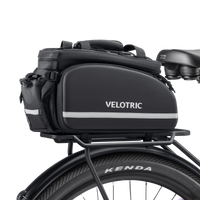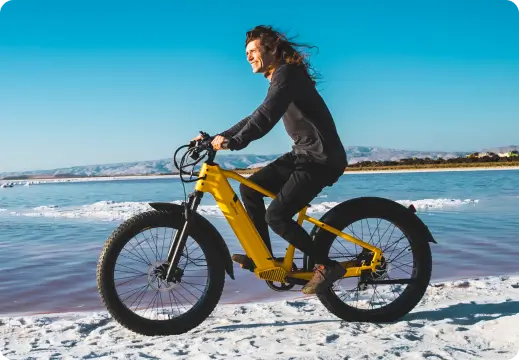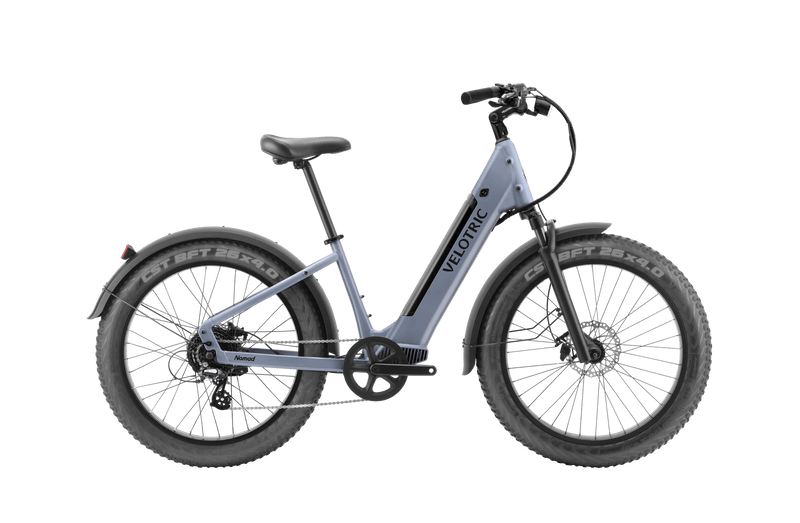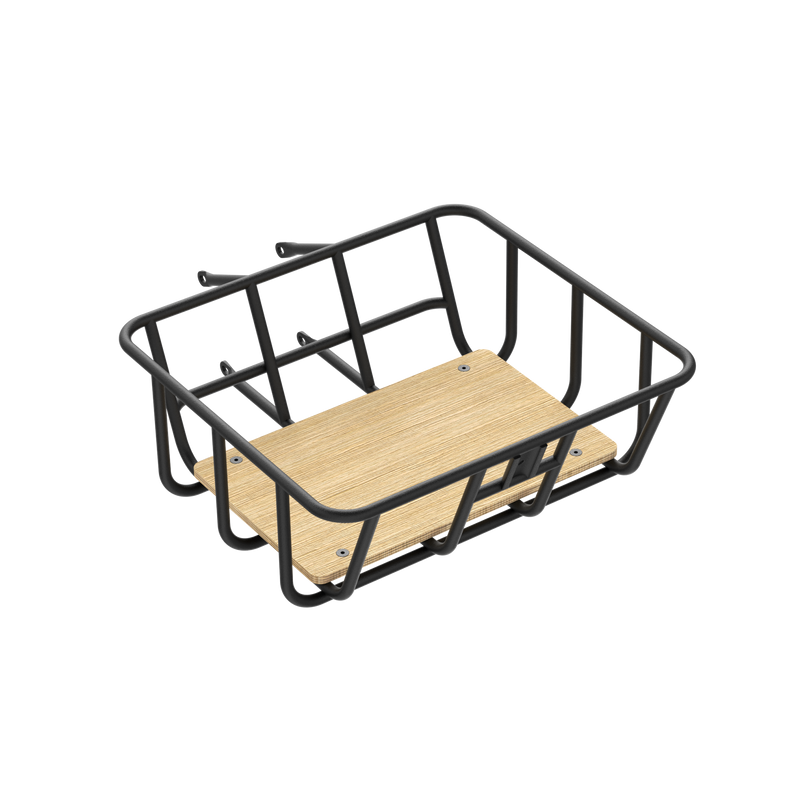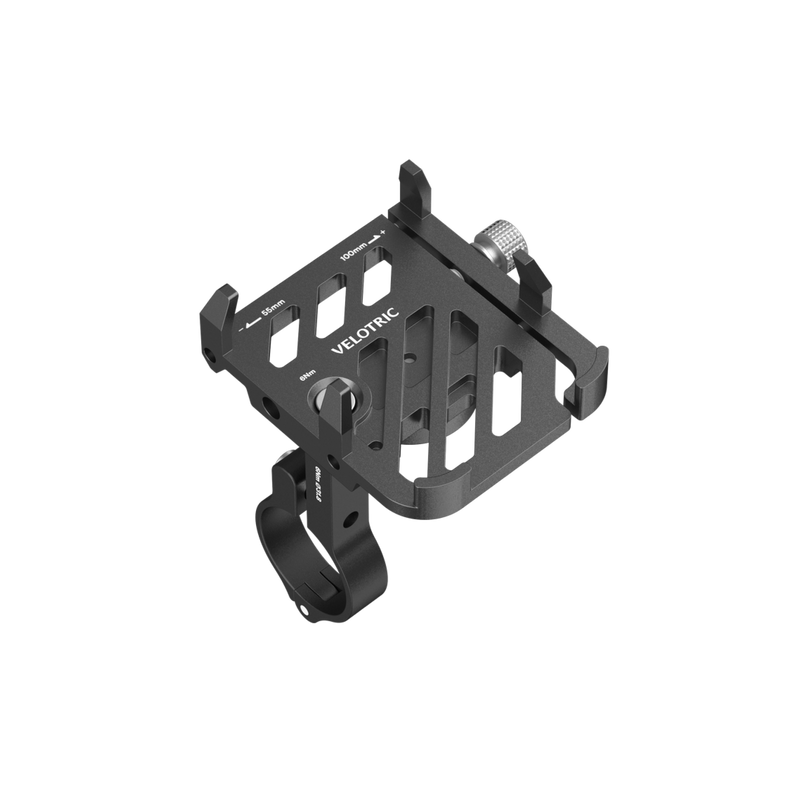One of cycling’s many benefits is that it gives you a chance to spend time outside.
You can get some fresh air, feel the sun on your face, and explore nature on two wheels. As a bonus, research shows that spending time in nature is good for your mental health!
But picture this: You head out cycling on a blistering summer day — and forget your sunglasses. You spend your whole ride squinting and end up with a headache.
Or this: You set off on a crisp winter day but forget your gloves. You have to turn back because your fingers are freezing.
Or THIS: You hit the trail on a gorgeous spring day without glancing at the weather. A sudden rain shower comes on, and you end up drenched.
Our point is this: The weather can make or break a ride on your ebike! However, it doesn't have to ruin your day.
The right seasonal cycling gear can help you avoid disaster and enjoy cycling, whatever the weather. Below, we talk about seasonal cycling essentials so you can prepare accordingly.
Safety First: What To Wear Regardless of Season
Some cycling gear is essential — whether riding in rain, sleet, snow, or sunshine. Make sure these items are part of your everyday cycling outfit.
Bike Helmet
As a cyclist, your helmet is your best friend — protecting your face, head, skull, and brain in case of an accident. Research shows that wearing a helmet reduces head injuries by 48%.
To keep the public safe, some states have laws mandating helmets. This guide explains state-by-state helmet laws and includes instructions on choosing and fitting a helmet.
Visibility Vest
A visibility vest can go over whatever seasonal clothing you wear. Made of reflective material, it allows cars and pedestrians to see you easily. This can help reduce the risk of collisions. You can also get high-visibility helmets, bike tires, water backpacks, socks, and even tape for your handlebars.
Cycling Gloves
Gloves aren't just for cold weather. Cycling gloves with grip pads make it easier to grab the handlebars, improving maneuverability. Fingerless gloves are another option. Gloves also protect the skin on your hands, preventing blisters from the handlebars and scrapes if you take a tumble.
Protective Glasses
Even if it's overcast, having a pair of protective glasses is helpful (in this case, you'll want lenses that aren't tinted). Glasses keep dust, dirt, pollen, bugs, and other debris from getting into your eyes.
They also help protect against wind, which can make your eyes watery. You'll be able to maintain clear vision, minimizing the risk of an accident. Wrap-around glasses are ideal, as they protect you from the front and sides.
Reflectors, Bike Lights, and Mirrors
Your ebike should be dressed for safety, just like you! Reflectors make it easier for others to see your ebike, while lights and mirrors make it easier for you to see others while riding. Increased visibility for all involved is important for safety.
Whether it's January or June, you should never ride without these safety items. Read on for our season-specific cycling clothing tips.
What To Wear Cycling in Spring
For balmy spring days, wear bike shorts paired with a long-sleeve jersey or a thin long-sleeve undershirt. If the weather is a bit crisper, add bib tights or leg warmers, and opt for a heavier long-sleeve jersey.
Remember the old adage, "April showers bring May flowers?" Prepare for wet spring weather by packing a water-resistant barrier jacket and waterproof neoprene shoe covers.
What To Wear Cycling in Summer
In the summer heat, it's important to keep cool while still protecting against the sun. For temperatures of 70 degrees and upward, opt for cycling shorts and a short-sleeve jersey.
Add a headband to keep the sweat out of your eyes, and top it off with wrap-around sunglasses. Apply sunscreen to your arms and legs, but avoid your face so it doesn’t run into your eyes when you sweat.
What To Wear Cycling in Fall
Fall weather can be variable — and windy. Prioritize layers. You can wear a sleeveless undershirt with a heavy long-sleeve jersey over top and tights with leg warmers.
If it's still warm enough, bib shorts are also an option. You may also want a light windproof jacket to keep the windchill away.
What To Wear Cycling in Winter
For winter cycling, it's all about staying toasty. Go for heavy tights, a long-sleeve turtleneck undershirt, and a heavy cycling jacket over the top.
You'll also want wool socks (merino wool is a popular choice) under your cold-weather riding shoes. Heavy full-finger gloves keep you comfortable, and a headband can cover your ears and keep them warm.
If it's super frigid, you may even want a balaclava — this can help protect your skin against wind chill, which can be rough during winter riding. Add knee warmers and arm warmers to keep your joints toasty and prevent aches and pains.
Things To Avoid Wearing While Cycling
Just as there are some fashion dos for cycling, there are also some don’ts. Steer clear of these items which aren't ideal for a safe (or comfortable) ebike ride:
- Jeans: Jeans are made of thick, inflexible material, which can impede your mobility when pedaling. Plus, the fabric can be super uncomfortable when straddling a bike seat. Skip the denim and opt for stretchy, soft fabrics instead.
- Baggy clothing: You might think loose clothes will maximize your comfort when riding a bike. Think again. There's a risk that loose fabric will get stuck in the bike's mechanisms or wheels. Plus, loose fabric fluttering in the wind will create drag, making you less aerodynamic and slowing you down.
- Dark clothes: This tip is all about visibility. Even if you're wearing a visibility vest over your outfit, steer clear of dark hues, which are hard to see. Opt for light, bright colors that pedestrians and drivers can spot clearly.
- Improper footwear: "Proper" footwear depends in part on what kind of bike you ride. Velotric ebikes are designed for everyday use, not competing, so you can wear your regular cool sneakers or cycling-safe work shoes. There are also special shoes made for mountain biking. Even if you're just riding a casual city ebike, at least wear closed-toed shoes to protect your feet.
- Underwear (under Lycra*): Bet you didn't see this one coming! This cycling fashion faux pas applies specifically if you're wearing Lycra bike shorts. Wearing underwear underneath the shorts can result in uncomfortable rubbing and chafing. The undergarments can also trap microbes. Strange as it may seem, some experts recommend going commando under bike shorts.
Clothing for Cycling
Apparel for Long-Distance Cycling
If you're going to be cycling for a long distance, comfort is a top priority. Temperatures can fluctuate throughout the day. For example, it will be warmer mid-day when the sun is at its strongest than in the early morning or evening. For this reason, long-distance cyclists should dress in layers.
Start with a thin, snug base layer made of a synthetic moisture-wicking fabric designed to keep sweat from settling on your skin.
Then, add a middle layer like a long- or short-sleeve top or cycling jersey. There should be some air between your bottom and middle layers to improve breathability.
Finally, add a weather-appropriate outer layer. This will depend on the climate. A thin fleece may suffice on a dry fall day, while your outer layer should be water-resistant for damp spring rides.
For your bottom, wear cycling pants made of synthetic, sweat-wicking fabric like Lycra. They can be long or short, depending on the weather.
Finally, wear a cycling pack with water, a cycling kit with maintenance essentials like tire patches, and a basic first-aid kit, especially if you're headed out for a long ride in rural surroundings.
What To Wear Cycling During the Different Seasons

When it comes to cycling clothing, wearing the right gear can make all the difference in having a comfortable and enjoyable ride. With changing weather conditions throughout the year, it's important to have a variety of options in your cycling kit to suit each season.
As you select the right fabric for your cycling attire, there are several factors to consider, such as comfort, breathability, weather conditions, and functionality. The right fabric can make a significant difference in your cycling experience, ensuring you stay comfortable and protected throughout your ride. Here are some fabrics commonly used in cycling clothing and their benefits:
Lycra
Lycra, also known as spandex or elastane, is a popular choice for cycling clothing. It offers excellent stretch and flexibility, allowing for a snug and aerodynamic fit. Lycra is commonly used in cycling shorts, bib shorts, and jerseys, providing comfort and freedom of movement.
Merino Wool
Merino wool is a natural fabric known for its exceptional temperature regulation properties, a favorite for snowy or winter cycling. It provides insulation in cold weather while remaining breathable and wicking away moisture to keep you dry. Merino wool is often used in base layers, socks, and long-sleeve jerseys.
Breathable Synthetic Fabrics
Synthetic fabrics like polyester and nylon are commonly used in cycling clothing due to their moisture-wicking and quick-drying properties. These fabrics help transport sweat away from your skin, keeping you cool and dry during intense rides. They are often used in jerseys, shorts, and base layers. Research suggests it's best to wear layers that you can easily remove or add as the temperature changes.
Windproof and Water-Resistant Fabrics
When cycling in cold and wet conditions, it's important to have outer layers made from windproof and water-resistant materials. These fabrics provide protection against wind chill and light rain, keeping you comfortable during your ride. Look for cycling jackets and vests that feature windproof and water-resistant properties, which can help prevent injuries.
Moral of the story? Yes, the fabric of your clothing can affect your ride. You put a lot of thought into which bike you wanted — your attire deserves the same consideration.
Technical Fabrics with UV Protection
When cycling in warm and sunny weather, it's crucial to protect your skin from harmful UV rays. Look for cycling clothing made from technical fabrics that offer UPF (Ultraviolet Protection Factor) ratings to shield you from the sun's rays. Lightweight jerseys and arm sleeves with UV protection are great options for hot-weather rides.
Hi-Vis
A great way to help with your safety is to wear something that is considered high-visibility or “hi-vis” for short. Hi-vis clothing while biking is important because it makes you more visible to motorists and other cyclists. This can be especially important when biking in low light or inclement weather conditions when visibility is poor.
Another way you can keep yourself safe is with bike lights. A helmet with lights built in can provide additional visibility to motorists and other cyclists, making it easier for them to see you on the road, particularly in low-light conditions. This can help reduce the risk of accidents and improve overall safety.
Padding and Chamois Fabrics
Cycling shorts, particularly bib shorts, often come with padded inserts called chamois. These inserts provide cushioning and reduce friction between your body and the saddle, enhancing comfort during long rides. Chamois fabrics are designed to be moisture-wicking and antibacterial, preventing saddle sores and irritation.
When choosing cycling clothing, consider the weather conditions, the duration of your ride, and personal preferences. Layering different fabrics can also provide versatility, allowing you to adapt to changing weather conditions by adding or removing layers as needed. Experiment with different fabrics to find what works best for you and enhances your overall cycling experience.
Conclusion
Remember, comfortable and functional clothing can make a significant difference in your performance and enjoyment while riding your eBike. So, whether you're tackling long rides, commuting to work, or exploring off-road trails, you want to be prepared for any adventure. So, stay toasty in cold weather, cool in warm weather, and happy where the road takes you.
Sources:
Research on Bicycle Riding Clothes | Science Publishing Group
A survey and design study of a protective cycling top wear | ResearchGate
Common injuries in cycling: Prevention, diagnosis and management | South African Family Practice
To wear or not to wear? A meta-analyses of the effects of bicycle helmets on injuries | NIH

























